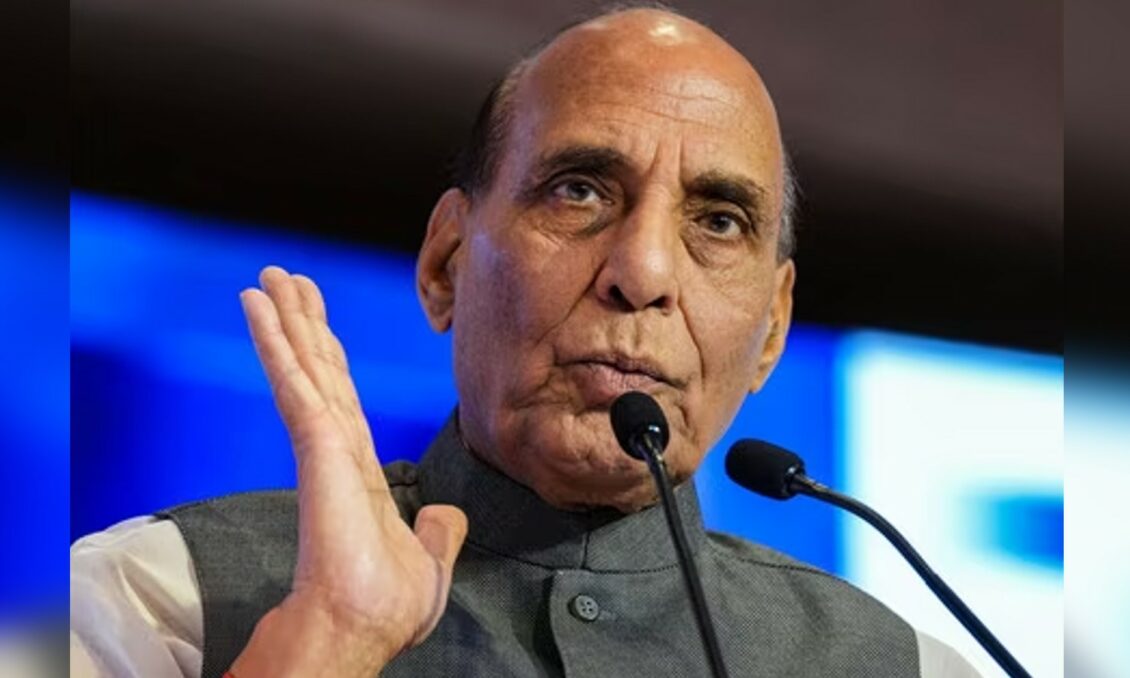Defence Minister Rajnath Singh attended a programme in Chennai to mark 9 years of NDA government in Tamil Nadu. While addressing a public meeting there, he touched on various achievements of the government in the last decade, especially in the defence sector. He focused on how we are aiming on self-reliance in defence sector through our defence industrial corridors.

In his address to public, Singh proudly states that India along with leaving behind Britan in becoming the 5th largest economy, it also remains the fastest growing large economy. He mentions that earlier India was known as defence importer but now we are in top 25 defence exporters. Our defence export which was only 900 crores in 2014, has now reached 16 Thousand crores.
Defence Industrial Corridors
A defence corridor is a path along which production of defence equipment by public sector, private sector and MSMEs are lined up and have high potential to increase operational capability off the defence forces of the country.
The industries in these corridors are to be provided with the “plug-and-play” support system where they will be provided with all the basic facilities and they need not face logistic issues. Assured water supply and uninterrupted electricity, connectivity with 4-lane heavy-duty highway will be there. Under Nivesh Mitra portal, single window approvals and clearances to defence and aerospace manufacturing is provided. There are simplified procedures and rationalised regulatory regime with easy reimbursement of incentives and subsidies.
India has two proposed defence industrial corridors, one in Uttar Pradesh and another one in Tamil Nadu. These corridors will be catalysts in indigenous production in defence and aerospace in India. Will reduce imports in defence items and help in exporting to other countries. They will give a boost to the growth of private manufacturers, MSMEs and start-ups in India.
Tamil Nadu Defence Industrial Corridor (TNDIC)
Tamil Nadu Defence Industrial Corridor has 5 nodes, namely Chennai, Coimbatore, Hosur, Salem and Tiruchirappalli. The corridor was inaugurated in 2019.
In his speech in Chennai, the defence Minister told that there is approximately 14,945 crores of investment planned in the TNDIC and till now 4,105 crores have already been invested.
Reportedly, in his recent meeting with his German counterpart, Boris Pistorious, Rajnath Singh pitched for opportunities in the defence production sector along with possibilities for German investments in these two defence corridors.
Uttar Pradesh Defence Industrial Corridor (UPDIC)
Uttar Pradesh Defence Industrial Corridor project is executed by the nodal agency, Uttar Pradesh Expressways Industrial Development Authority (UPEIDA). It has six nodes, namely, Aligarh, Agra, Kanpur, Chitrakoot, Jhansi and Lucknow. This project was proposed in 2018.
In a recent event of defence dialogue on ‘Atmanirbhar Bharat’ organised by STRIVE, a think tank, in Lucknow last Saturday, he informed that so far, an investment of about ₹2,500 crores has been made in the Uttar Pradesh Defence Industrial Corridor (UPDIC) by various entities. He pointed out that the corridor will not only produce spare parts, nuts and bolts but also manufacture and assemble drones/unmanned aerial vehicles, electronic warfare, aircraft and BrahMos missiles.
In his address, he also highlighted the government’s efforts in creating a robust defence system, which will cater to domestic security needs as well as fulfill the requirements of friendly countries.
Self-Reliance: Make in India
Under Make in India efforts, aim of these corridors is to combined efforts of government and private players in achieving self-reliance. Employment opportunities through these projects are an added bonus and boost to MSMEs, start-ups, etc.
While speaking at Lucknow event, defence minister stated that, now self-reliance is not just an option but a necessity for us. As India is facing a double threat on its borders along with the new dimensions of warfare that are emerging in today’s world.
He focuses on the need to develop indigenous state-of-the-art weapons and platforms that will equip and prepare the armed forces to tackle newly emerging challenges.
Explaining why such need he adds that most of the weapons today are electronic-based systems which can potentially reveal sensitive information to the adversaries. And the imported equipments have certain limitations therefore we need to go beyond the horizon and achieve self-reliance in niche technologies.













